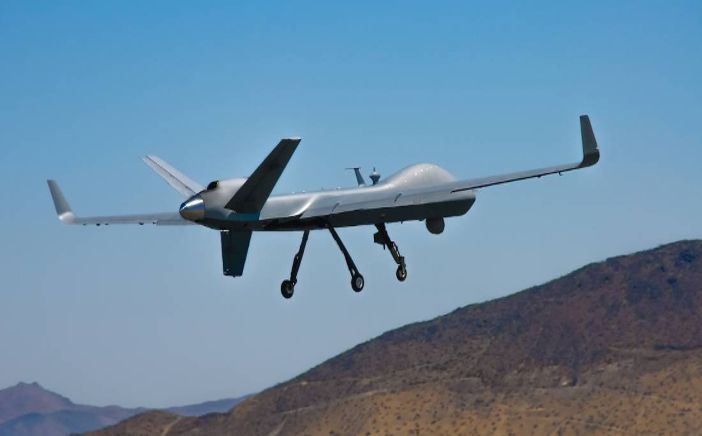The SkyGuardian Remotely Piloted Aircraft (RPA) is set to become the first drone of its type to cross the Atlantic and land in the UK next month.
The General Atomics Aeronautical Systems’ MQ-9B SkyGuardian is expected to take off from its base at the aerospace company’s Flight Test and Training Center in Grand Forks, North Dakota and fly 4,000 miles to RAF Fairford in Gloucestershire, UK on July 11. It will be piloted during the 20-hour flight by operators located at Grand Forks.
The SkyGuardian will then be on display at the Royal International Air Tattoo in Gloucestershire, UK, on July 13-15.
The MQ-9B SkyGuardian has a wingspan of 79ft and can fly non-stop for more than 40 hours. The Royal Air Force (RAF) is the launch customer for the drone and is due to bring the UK variant, known as the Protector Mk1, into service in 2021. The RAF has ordered 16 of the aircraft.
The MQ-9B is a “certifiable” version of General Atomics’ MQ-9 Predator B drone, known as the Reaper, and is compliant with the STANAG 4671 NATO airworthiness standard for Unmanned Aircraft Systems. This means it can be more easily integrated into civil airspace compared to older RPA systems such as the Reaper.
The aircraft’s development is the result of a five-year, company-funded effort to deliver an RPA that can meet airworthiness type-certification requirements from around the world, including the UK’s Military Airworthiness Authority (MAA) and the US FAA.
According to General Atomics, type-certification of the aircraft and it’s collision avoidance system will allow “unrestricted operations in all classes of civil airspace”.
General Atomics has achieved several MQ-9B milestones during testing in recent months, including the first FAA-approved flight for a company-owned RPA through non-segregated civil airspace without a chase aircraft and the completion of lightning tests.
In May 2017, the aircraft set a Predator endurance record of more than 48 hours of continuous flight.
The Civil Aviation Authority (CAA) has approved the SkyGuardian’s flight in UK airspace and has issued guidance to pilots and aircraft operators to take note of a series of airspace restrictions that will be put in place over certain areas of the UK to ensure its safe journey.
The CAA said, “The CAA supports the safe development of Remotely Piloted Aircraft in the UK as they can bring many benefits. We have worked closely with General Atomics, NATS and the armed forces to safely accommodate the SkyGuardian into UK airspace.”
Air Tattoo chief executive Andy Armstrong said, “Remotely piloted aircraft, for both civilian and military use, are clearly an important part of aviation’s future landscape. We are already seeing a rapid growth in smaller airframes being used recreationally, for aerial photography and they have been used effectively in local search and rescue operations. We watch with great interest as further commercial applications are explored.
“It’s appropriate that on an occasion when we are celebrating the RAF’s centenary that we should present to the public not only aircraft from the RAF’s illustrious past and present but also offer a rare glimpse of its future.
Inmarsat’s SwiftBroadband SATCOM will be used by the MQ-9B’s ground control station to communicate and control the aircraft and also will be used in the RPA’s final configuration for capabilities such as automatic takeoff and landing.
Development of the MQ-9B SkyGuardian began in 2012. Its first flight took place in November 2016.





